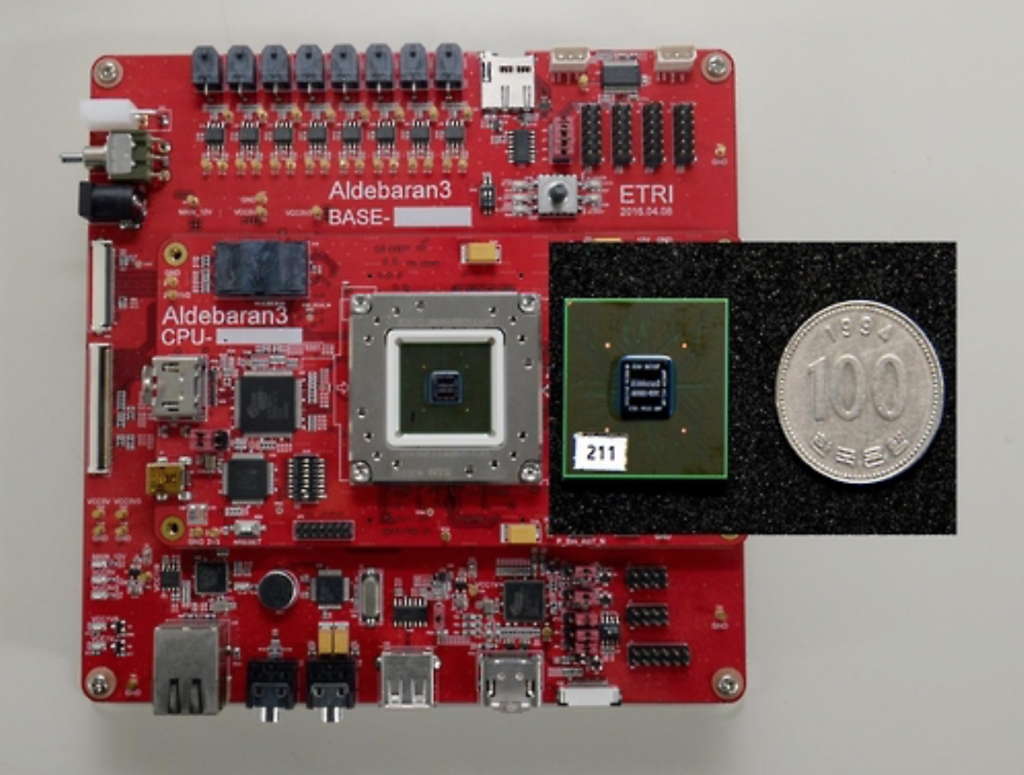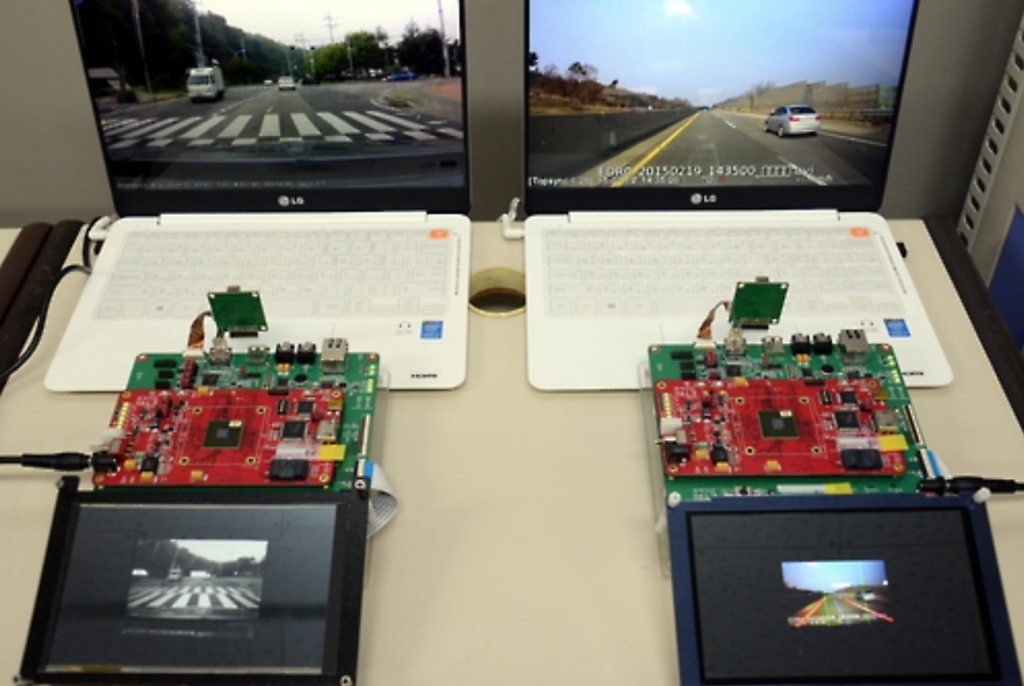
Aldebaran is best marked by its ability to detect and resolve malfunctions in a vehicle’s electronic devices, as in the case of sudden unintended acceleration. Its capacity to check and verify malfunctions also satisfies ISO standards, the institute said. (image: ETRI)
DAEJEON, Dec. 1 (Korea Bizwire) – The Electronics and Telecommunications Research Institute announced Thursday that a joint team of researchers from ETRI, Samsung Electronics, NextChip, and Unmanned Solution had developed Aldebaran, a gigahertz-scale processor that will serve as the brain of future self-driving vehicles.
Such processors gather data from various sensors on an autonomous vehicle for analysis and processing, making them an essential component of self-driving cars. And the biggest beneficiaries of the development will be domestic enterprises, said ETRI, which have been relying on foreign-made devices.
According to ETRI officials, Aldebaran is best marked by its ability to detect and resolve malfunctions in a vehicle’s electronic devices, as in the case of sudden unintended acceleration. Its capacity to check and verify malfunctions also satisfies ISO standards, the institute said.
In addition, unlike existing processors that use hundreds of watts of electricity, Aldebaran is capable of processing 1 gigahertz of data while drawing only 0.24 watts of power, boasting an energy efficiency 100 times greater than its counterparts.
Aldebaran’s semiconductor is 7 millimeters wide and 8 millimeters tall, and its full component is less than 10 centimeters in every dimension, allowing it to be easily installed in self-driving vehicles and in other devices or machines that run on software like robots and other electronics.
Aldebaran is the result of a ten-year research project that took off in 2006. Over the period, the team published articles in a dozen SCI journals, submitted some 100 patents, and made five successful technology transfers.
By Kevin Lee (kevinlee@koreabizwire.com)







